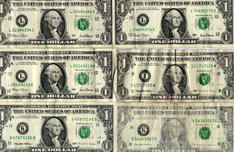
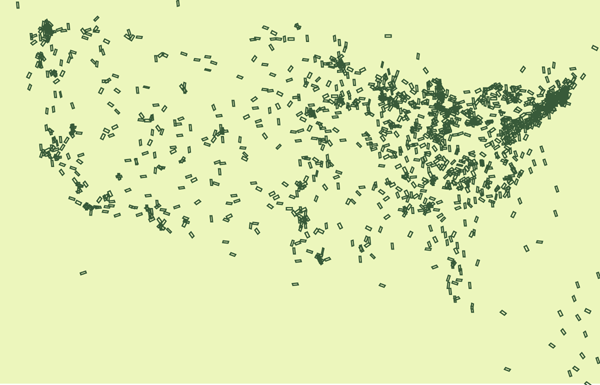
These are touted as the "words to live by" in Hans M. Guy's primer for aspiring Georgers. If you want to know what a "Georger" is, you could check Slowpoke's "Encyclopędia Georgetannica" to discover that it refers to any registered user of the website, wheresgeorge.com. This website, which was launched in the height of the tech-boom of the late 1990's, allows individuals to enter the serial numbers of American paper currency into a database and track where their bills have been and where they go.
At present, over 2 million people have registered and tagged nearly 40 millions bills. Of course some users are more prolific than others: Adam, a 36 year-old man from New Jersey, has entered 174,000 of them. Along with "entering" the bills into the database, Georgers often "mark" the bill with the website address (either by writing it in the margins or, for increased productivity, using a stamp). They strike a balance between being bold enough to attract the recipient's eye, yet avoiding watermarks, serial numbers, or anything else that would "render [the] bill unfit for circulation."
Finally, they reintroduce the bills into circulation. As it turns out, there is quite a bit of strategy involved here as well. Often, the object is to keep the bill away from banking institutions who might pull the worn note out of circulation (a one-dollar bill averages 18 months in circulation) and instead direct the money towards stores that are likely to redistribute it immediately. This activity also alters spending habits, encouraging participants to pay in cash where electronic payment might have previously sufficed (statistics say: only 20% of money exchanged during all purchases is cash). Similarly, old and large bills are spent with the intent of acquiring many and new bills.
SpottingThere are obvious similarities to train-spotting and the more popular plane spotting, which, like bird watching maintains identification of the distant object as a crucial element. The internet has allowed participants to maintain online databases and develop communities around the hobby. Similarly, the wheresgeorge website provides a framework for the creation of communities, but centered on a single database. It is difficult to imagine bill-spotting being of interest to anyone without the bill's reappearance, which is only made possible by users' collective access to this database.
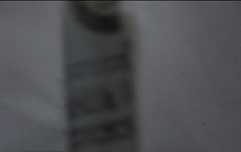
Another notable component to the phenomenon is the degree to which Georgers invest their own identity in the notes that pass through their hands. Some users cooperate in order to create parent-child trees, where the bill forms the basis for the familial bond. Others simply socialize by sending emails to the previous handlers of the bills they acquire. They compete, conduct periodical regional meetings, form addict support groups, and maintain profile webpages. Even after spending, Georgers continue to refer to the bills as theirs. Some treat the cash as surrogate travelers: an owner of a pizza restuarant in Pennsylvania quips, "I wish I had been to places my bill ended up sometimes."
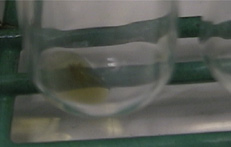
Mostly, Georgers seem fascinated by the snowballing value of a dollar bill, as it travels around the world and passes through many peoples' hands. Not only does the paper acquire unseen traces of food, blood, cocaine, and bacteria, but stories of the movement of people and their spending. These microscopic and macroscopic traces can only be extracted through mass spectrometry or collaborative use of the internet.
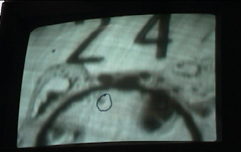
Georgers have a relationship with cash that non-Georgers don't; they engage in the same quotidian exchanges (at the grocery store, the race track, the video shop, etc.) but they see money differently. The first applet is a visualization of five years of spotting data from the wheresgeorge website, animated at the rate of a month per second.
The second applet is a simulation of the movement of paper money, based on the data used for the first. It tries to maintain the relative geographic accumulations seen in the first by preserving popular paths and expected time of travel.